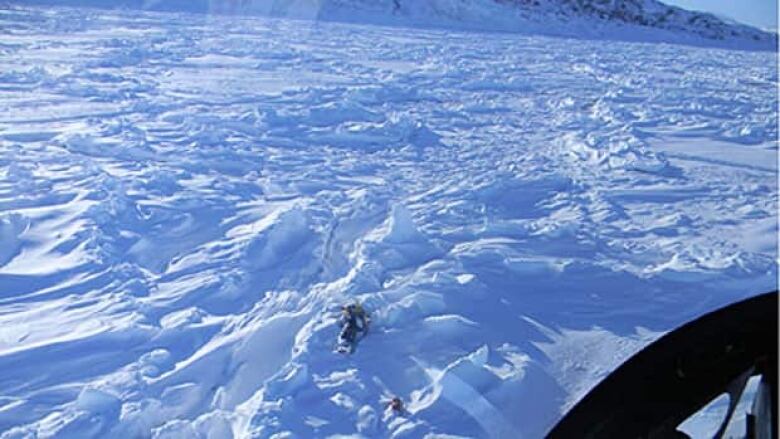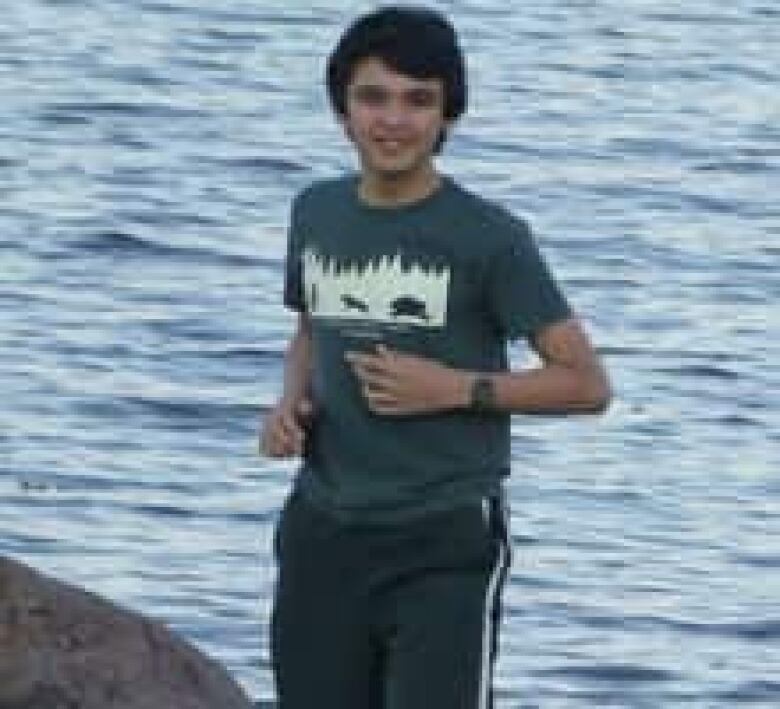Search for Labrador boy lost on ice raises more questions
Weather, equipment and protocol problems hindered the military

An investigation by CBC'sThe Fifth Estateis raising questions about the Department of National Defence's response to a call to help a lost 14-year-old in northern Labrador.
Burton Winterswas last seen leaving his grandmother's home in the Inuit community of Makkovikon a Sunday afternoon almost eight weeks ago. He was reported missing that evening.
The next morning,DND was asked to send a helicopter to help local searchers.
But the military didn'tdispatch a chopper for more than 36 hoursand, by then, it was too late.

Winters had abandoned his snowmobile after it became stuck in heavy snow andrough sea ice about 10 kilometres from Makkovik. He walked another 19 kilometres before he died.
Days after Winters' frozen body was recovered on Feb.1, militaryofficials defendedtheir decision not to fly when the call came on the morning of Jan. 30.
"We have set guidelines when it comes to ceiling and visibility and in the case where we were looking at where that search was, it would have been deemed unsafe to fly," saidRear Admiral and Commander of Maritime Forces Atlantic David Gardam.
The Fifth Estate has obtained the operational log related to the incident and it includes weatherreports that contradict that statement. DND's guidelines say search and rescue helicopters need a 300-foot clearance and half-mile visibility to fly safely. The weather reports show they had twice that on Jan. 30.
Watch The Fifth Estate
The CBC's The Fifth Estate details how weather, equipment and communication problems conspired to slow the military's response to a call for help.
LostOn The IceairsFriday at 9 p.m./9:30 p.m. NT on CBC-TV and will be rebroadcast on CBC News Network.
The military still didn't send a helicopter after theweather improved.When asked why not, officials replied: no one called them back to say they were still needed.
"We use a call-back system when we do ground search and rescue.No subsequent call was received, until the second call, which was on Jan. 31," said Gardam.
At the time, the militarycalled it a "time-tested protocol," butThe Fifth Estatecould find no one who knew of it not even the searchers who looked for Winters.
"No I haven't. Not as a ground search and rescue co-ordinator here," said Barry Anderson, a search and rescue co-ordinatoron the coast ofLabrador.

Neither had a30-year veteran of the federal search and rescue system.
"If there was a time-honoured protocol it must've started that morning because I have never seen it," said Clarence Peddle, a former Canadian maritime search and rescue co-ordinator.
The Fifth Estate's investigation reveals thatthe military's real problem that day was not weather or protocol but broken equipment.
The military said the two nearest search and rescue helicoptersin Goose Bay, N.L.,were not in service that day.
What the military has never publicly explained and what the log reveals is that the planes that normally accompany the military's search and rescue helicopters were also out of service.All three Hercules transportplanes in Atlantic Canada were unable to fly.That raises questions about the military's capability to respond to future emergencies at sea.
Watch the CBC'sThe Fifth EstateFriday at 9 p.m./9:30 p.m. NT on CBC-TV. Itwill be rebroadcast on CBC News Network.












_(720p).jpg)


 OFFICIAL HD MUSIC VIDEO.jpg)
.jpg)



























































































